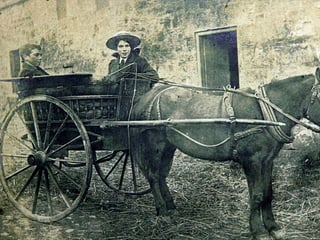Why Edinburgh Council's plans for low-traffic neighbourhoods shouldn't be overshadowed by controversy – Steve Cardownie


It is seeking views on the introduction of low-traffic neighbourhoods (LTNs) in Leith, Corstorphine and East Craigs which it proposes to progress on a trial basis using an experimental traffic regulation order or ETRO.
A low-traffic neighbourhood would, in essence, prevent most vehicles from travelling between certain streets while allowing local residents to continue to do so as well as receiving deliveries etc.
Advertisement
Hide AdAdvertisement
Hide AdNon-local traffic, however, would be confined to using main or strategic roads, thereby cutting down on the number of vehicles in the designated LTN. To augment this, other initiatives such as one-way streets, traffic calming and pocket parks and community spaces can be introduced.
If approved, the benefits of LTNs can greatly enhance the environment for those living in the area and they have largely been welcomed and enjoyed by communities where they have already been in operation throughout the UK.
Some of the benefits are obvious. For instance, it can improve air quality and cut down on noise pollution and the streets would be safer for pedestrians and cyclists, particularly children making their way to and from school.
The council has highlighted the opportunities that LTNs can provide with the potential for the enhancement of the public realm, with the introduction of grassed areas with additional tree planting, new seating and resting places and the improvement of safer routes to school. So what’s not to like?
Advertisement
Hide AdAdvertisement
Hide AdThere is no doubt in my mind that the thoughtful implementation of LTNs has a great deal to commend it and I am sure that local communities would embrace their introduction in their area and reap the benefits – especially youngsters – but residents will need to agree the specifics envisaged for their area.
The Spaces for People programme has not been without its detractors, some of whom believe that their well-made points of criticism on some aspects of the proposals have been ignored, with local knowledge being jettisoned in the pursuit of a predetermined outcome.
The public perception is that the council has been culpable in this regard and the formation of protest groups in East Craigs and south-west Edinburgh who feel that they are not being listened to bears testimony to this view.
All the signs are that the council has finally recognised its past mistakes and the needless resentment that it stoked up by adopting a “we know what’s best for you” attitude and although the time-frame is tight it looks like that it is taking its responsibilities seriously with the current consultation process.
Advertisement
Hide AdAdvertisement
Hide AdIf wiser heads have indeed prevailed, the assessment and consideration of the views expressed through this exercise must instil confidence in the public that they will be objectively appraised and taken on board if merited.
LTNs have great potential and can bring much-needed environmental benefits to areas that have been plagued by excess traffic use but they must have the potential to be modified if local knowledge points out deficiencies or suggests improvements.
This would ensure that the whole exercise was not mired in controversy and that LTNs get the credit they deserve.
A message from the Editor:
Thank you for reading this article. We're more reliant on your support than ever as the shift in consumer habits brought about by coronavirus impacts our advertisers.
If you haven't already, please consider supporting our trusted, fact-checked journalism by taking out a digital subscription.
Comment Guidelines
National World encourages reader discussion on our stories. User feedback, insights and back-and-forth exchanges add a rich layer of context to reporting. Please review our Community Guidelines before commenting.
